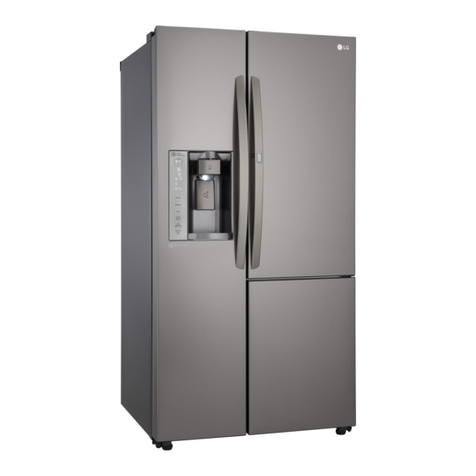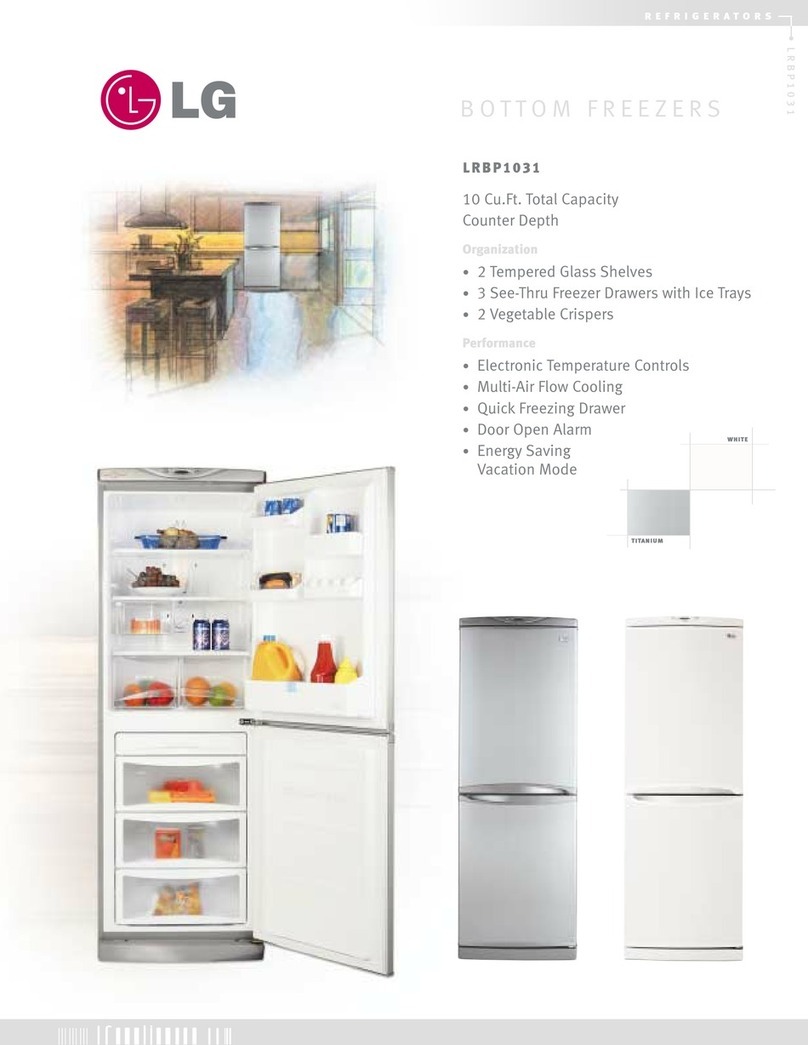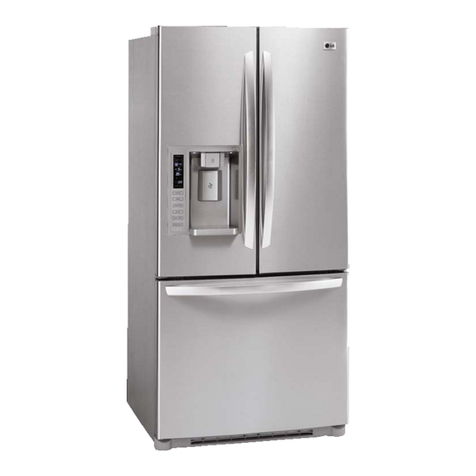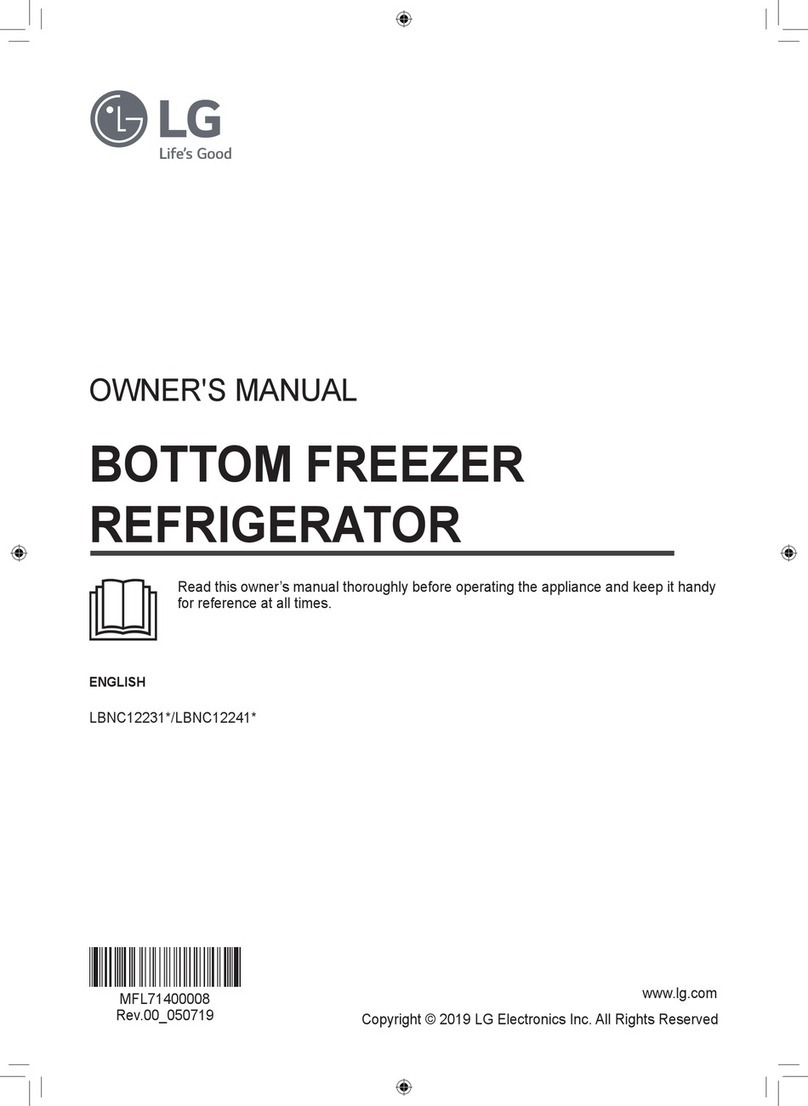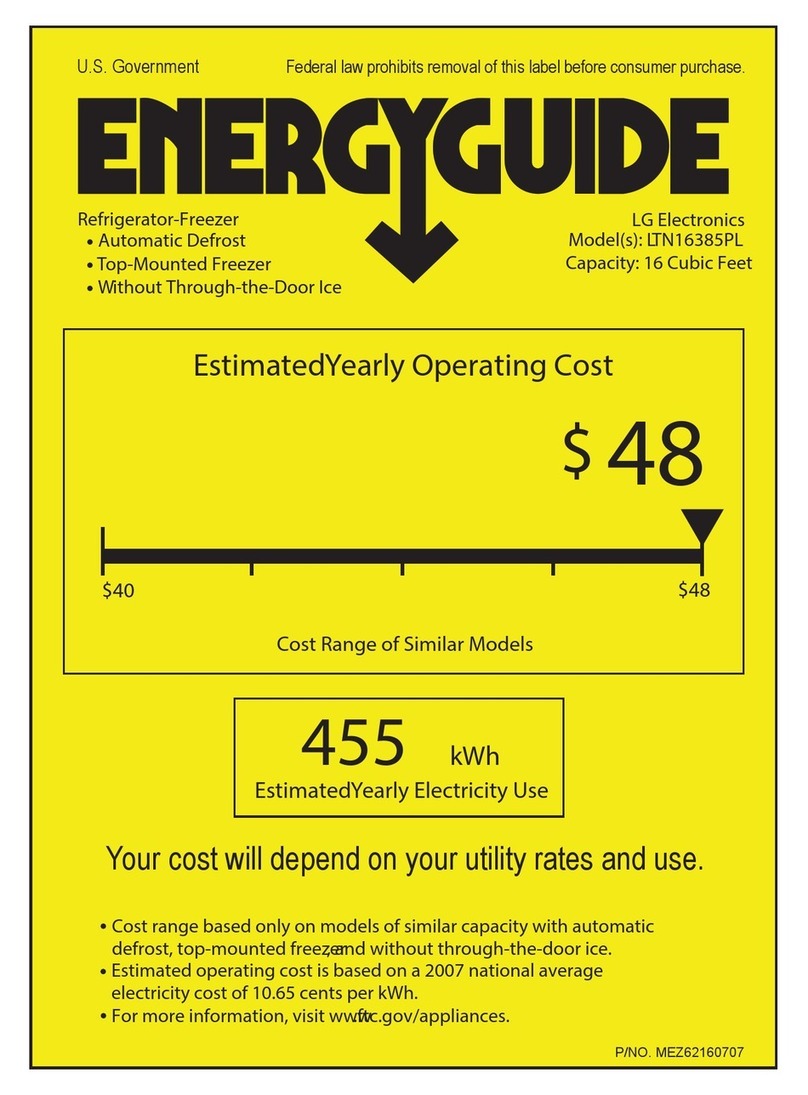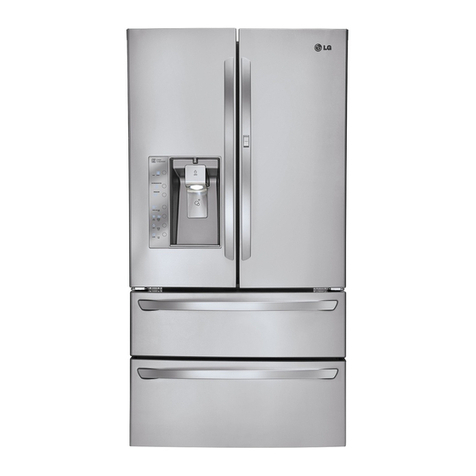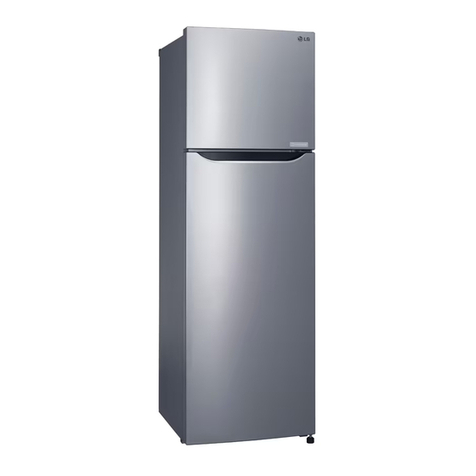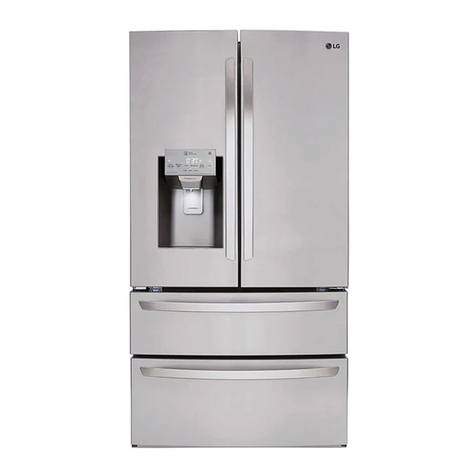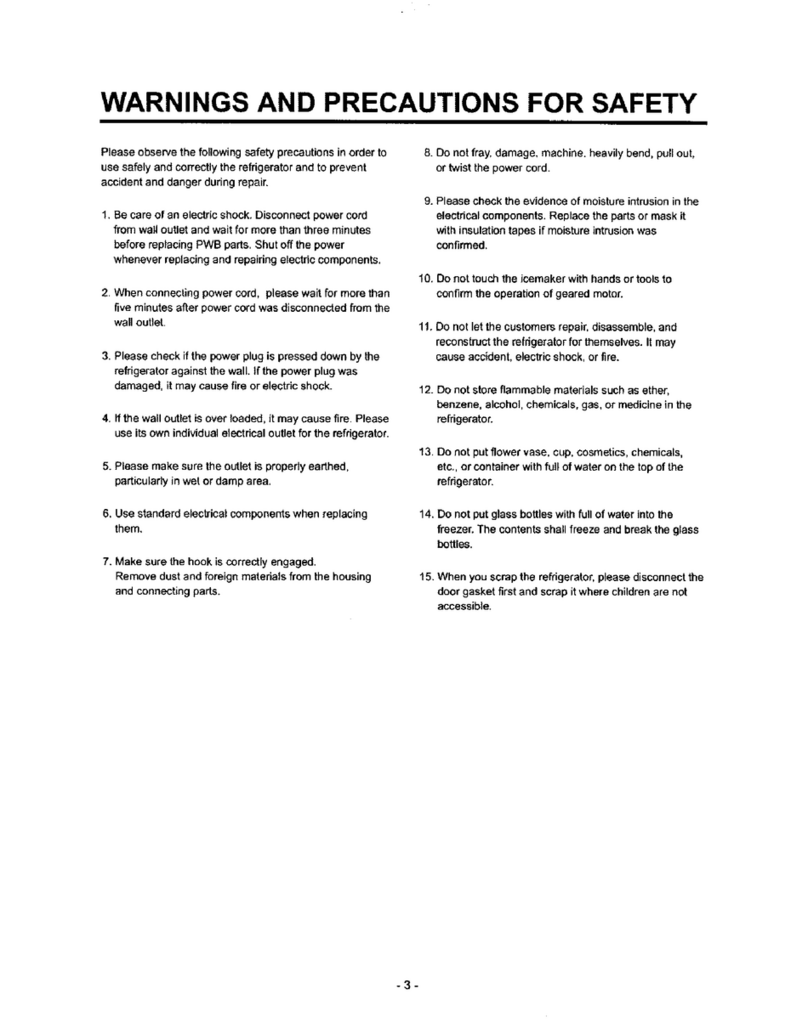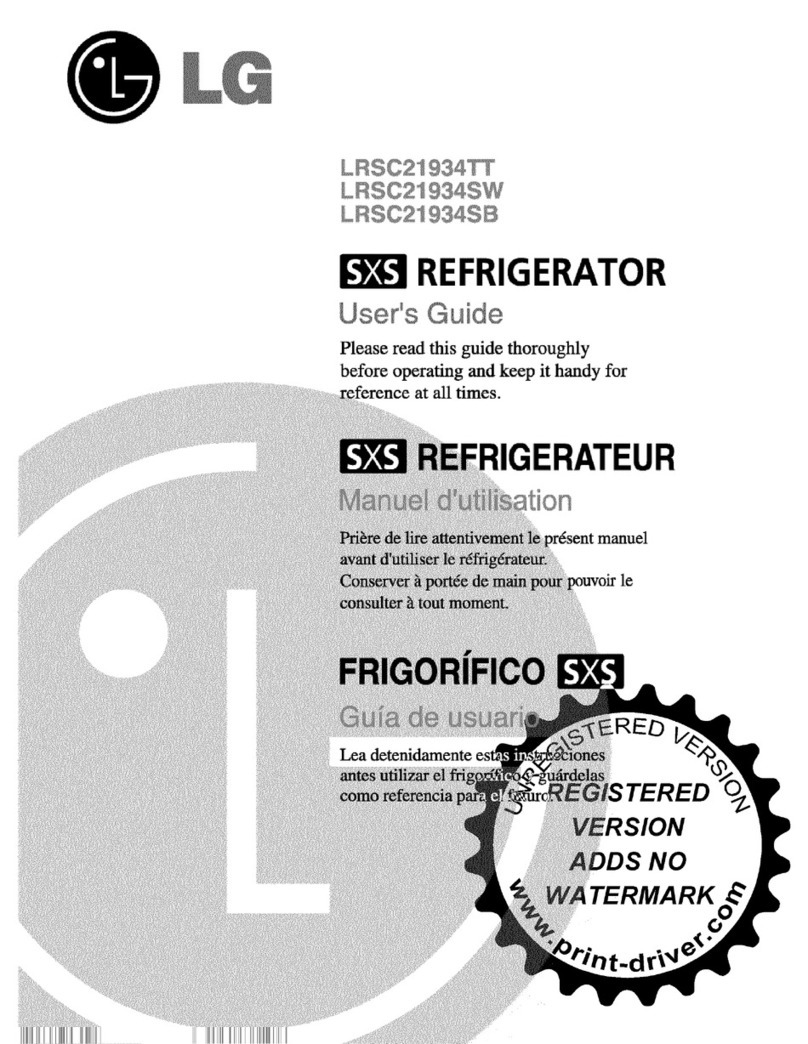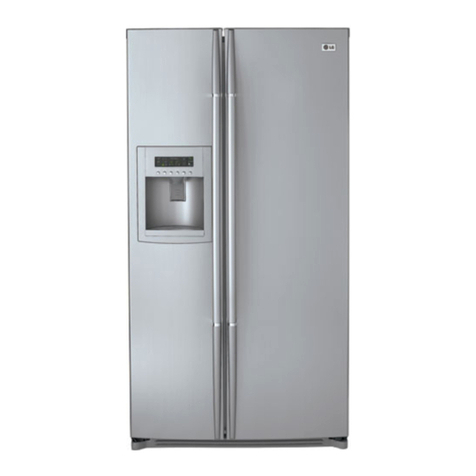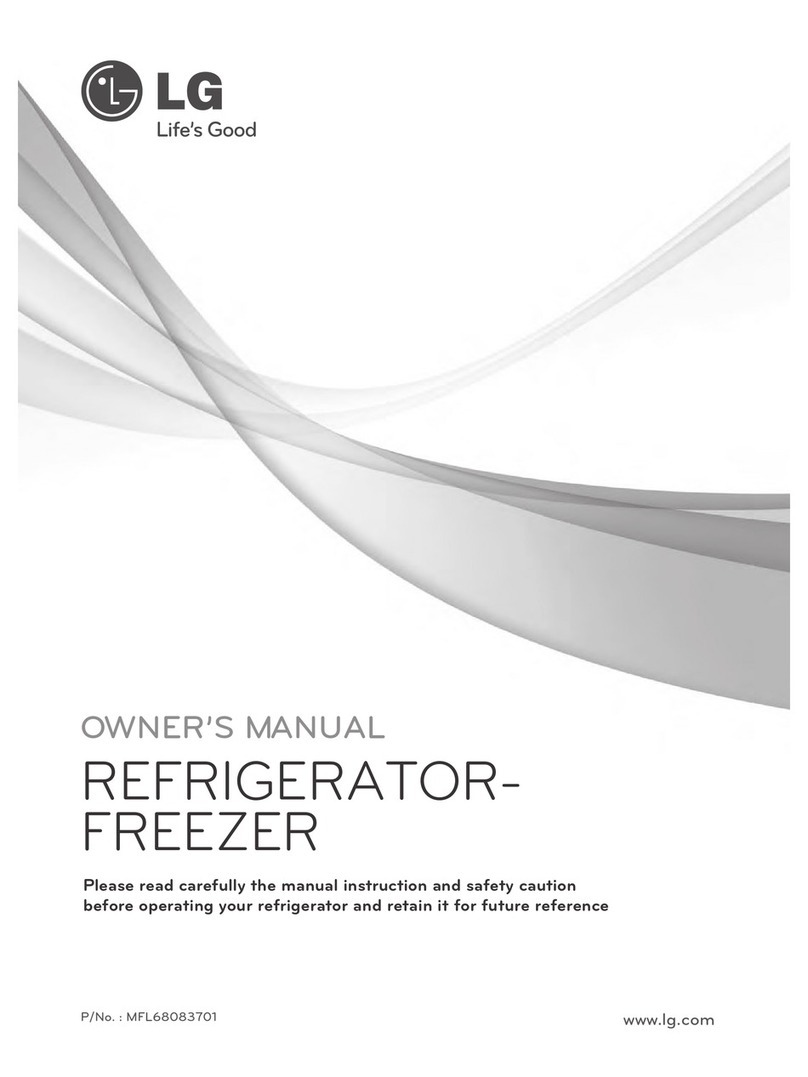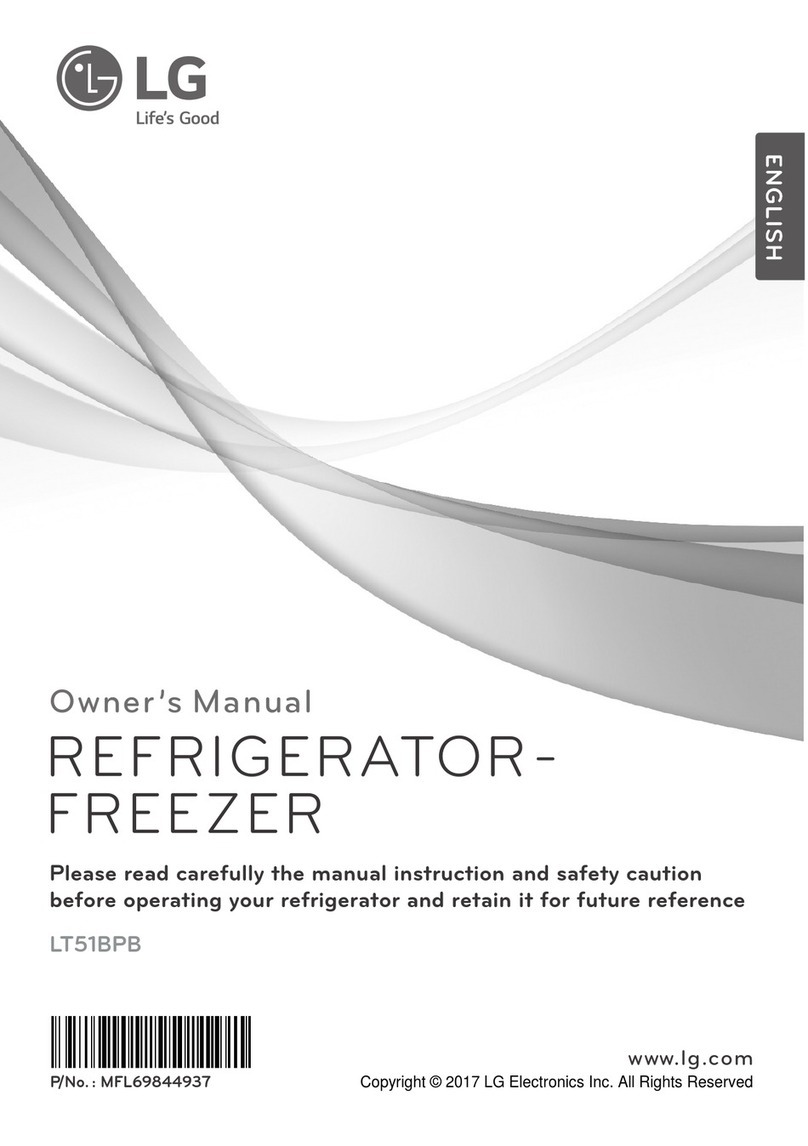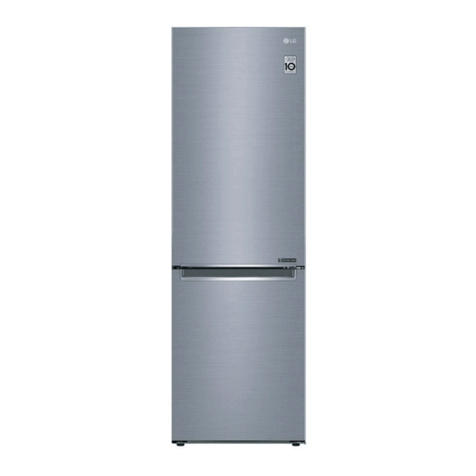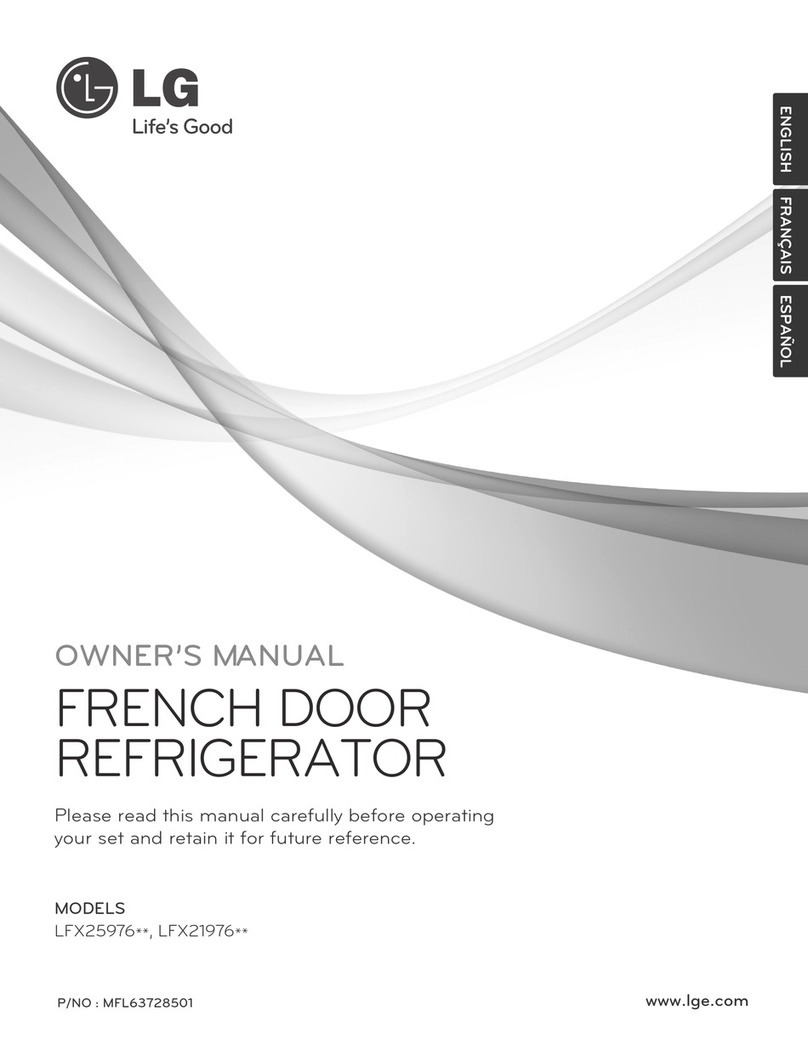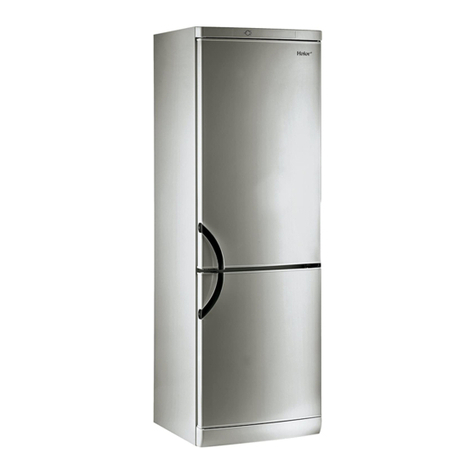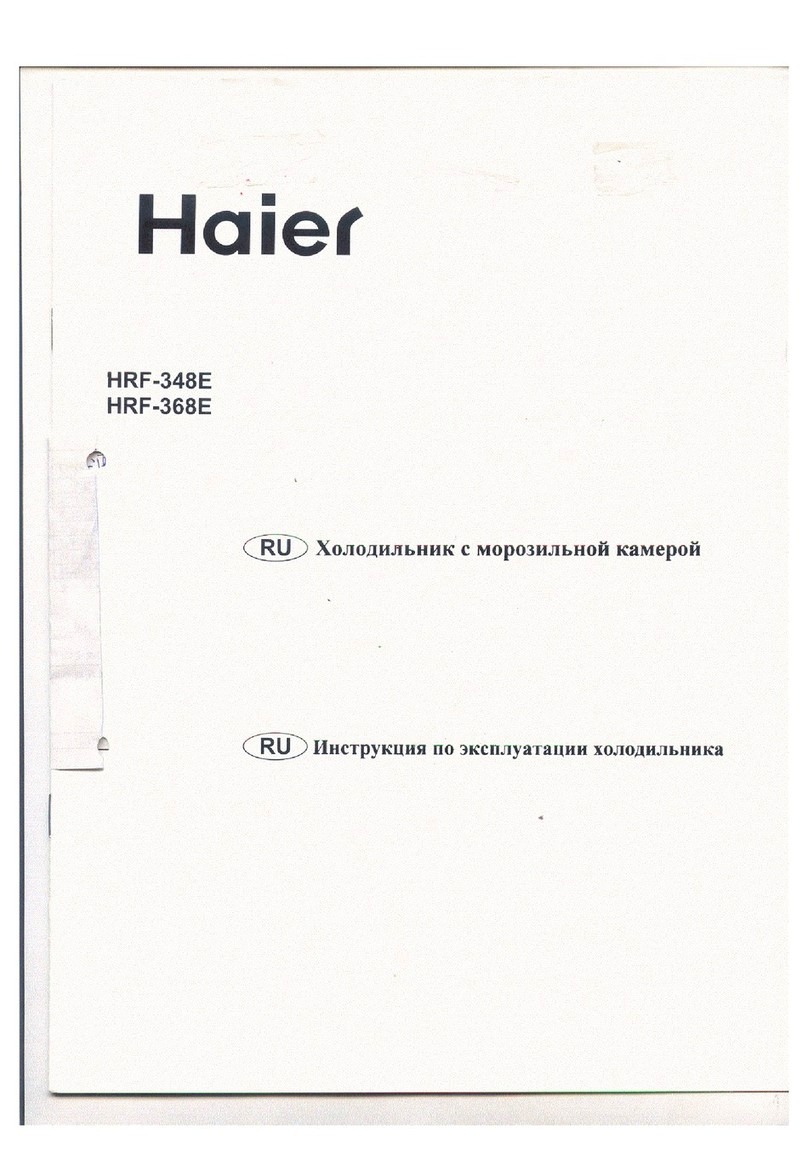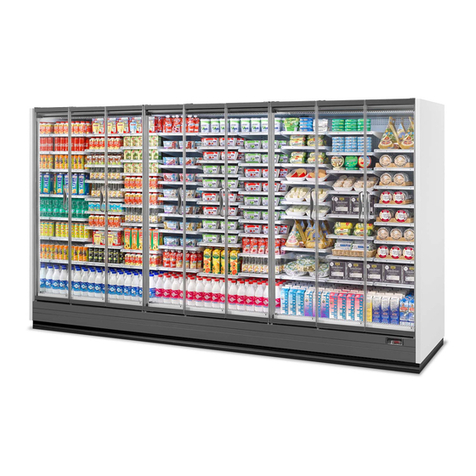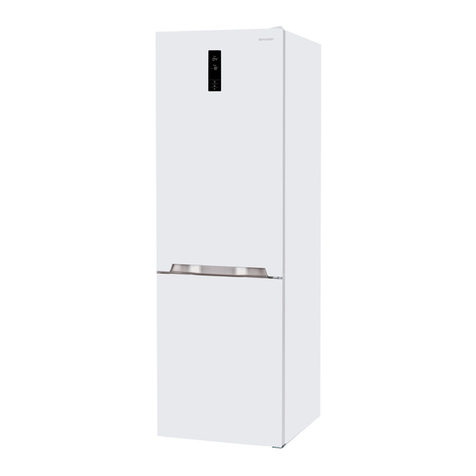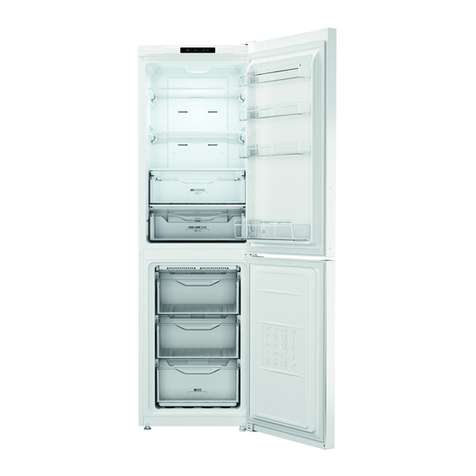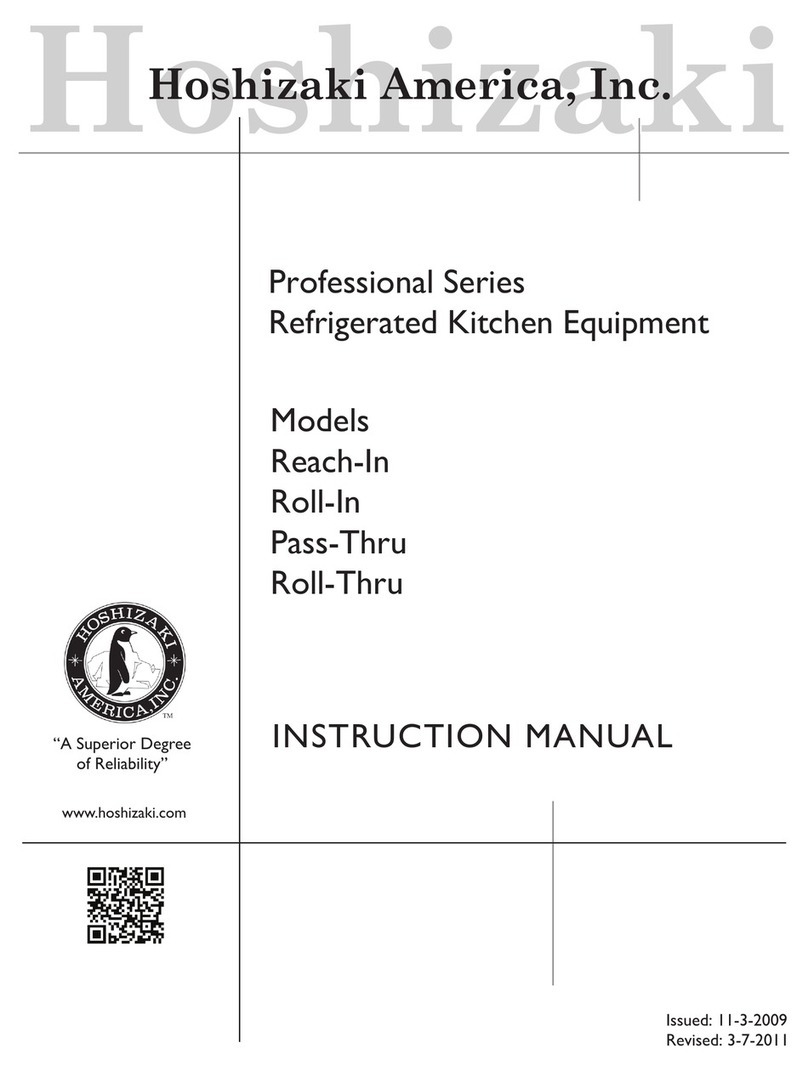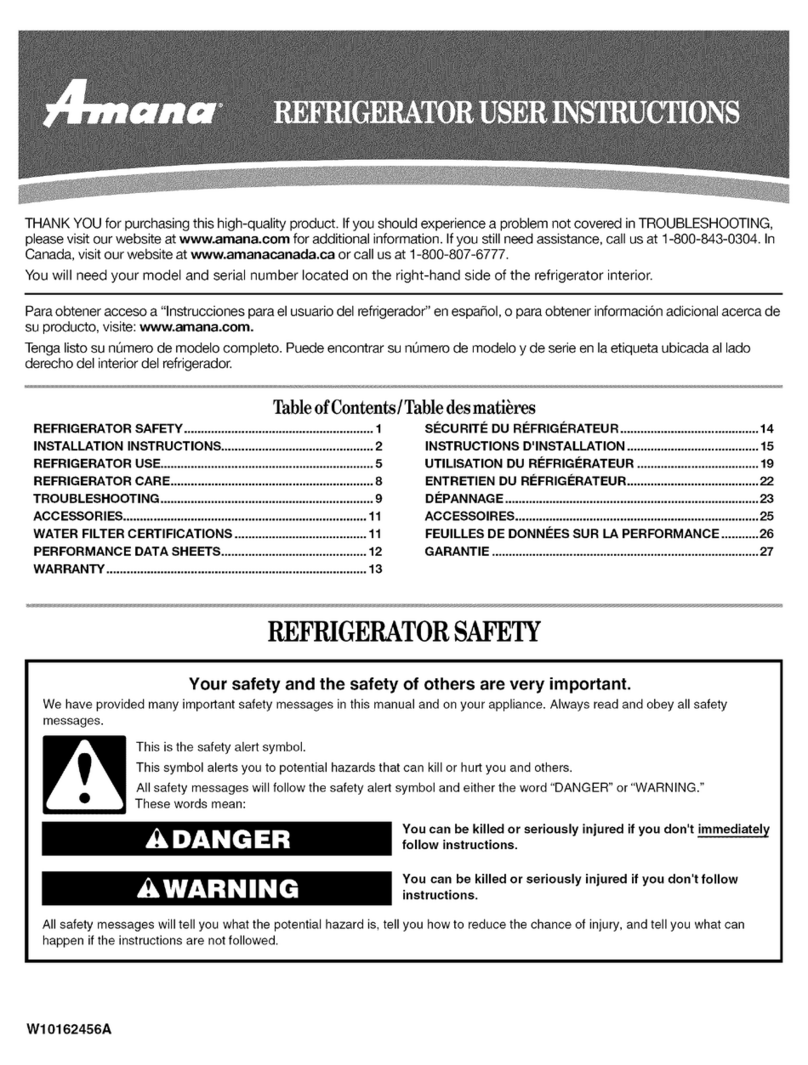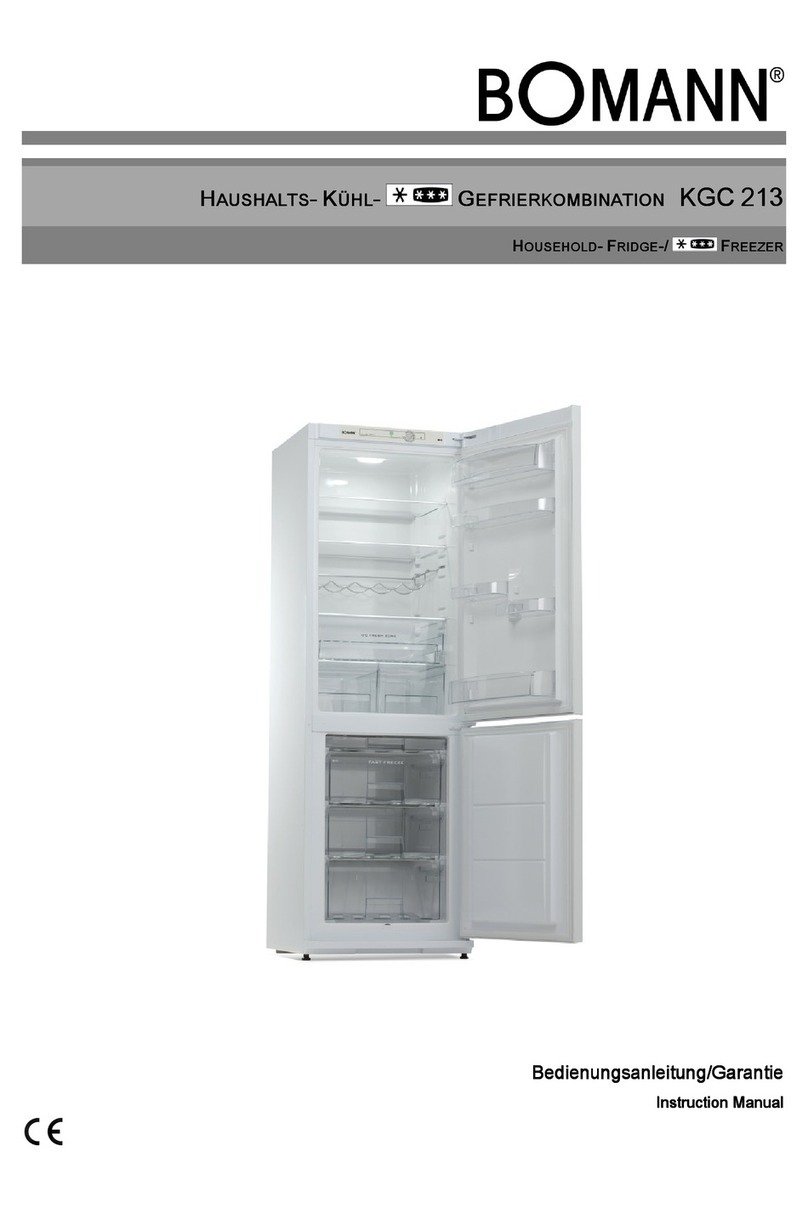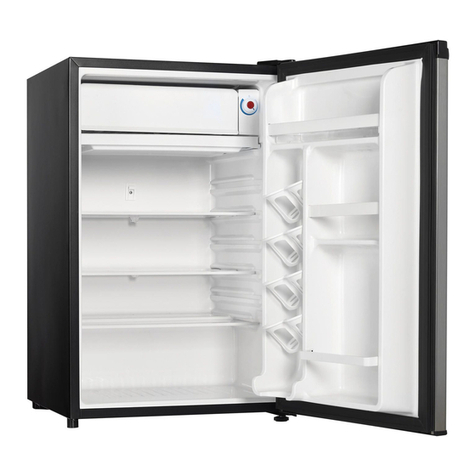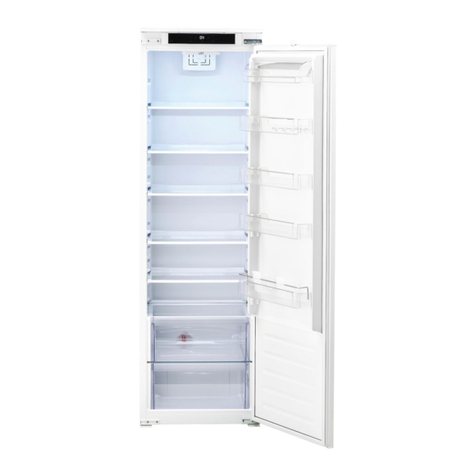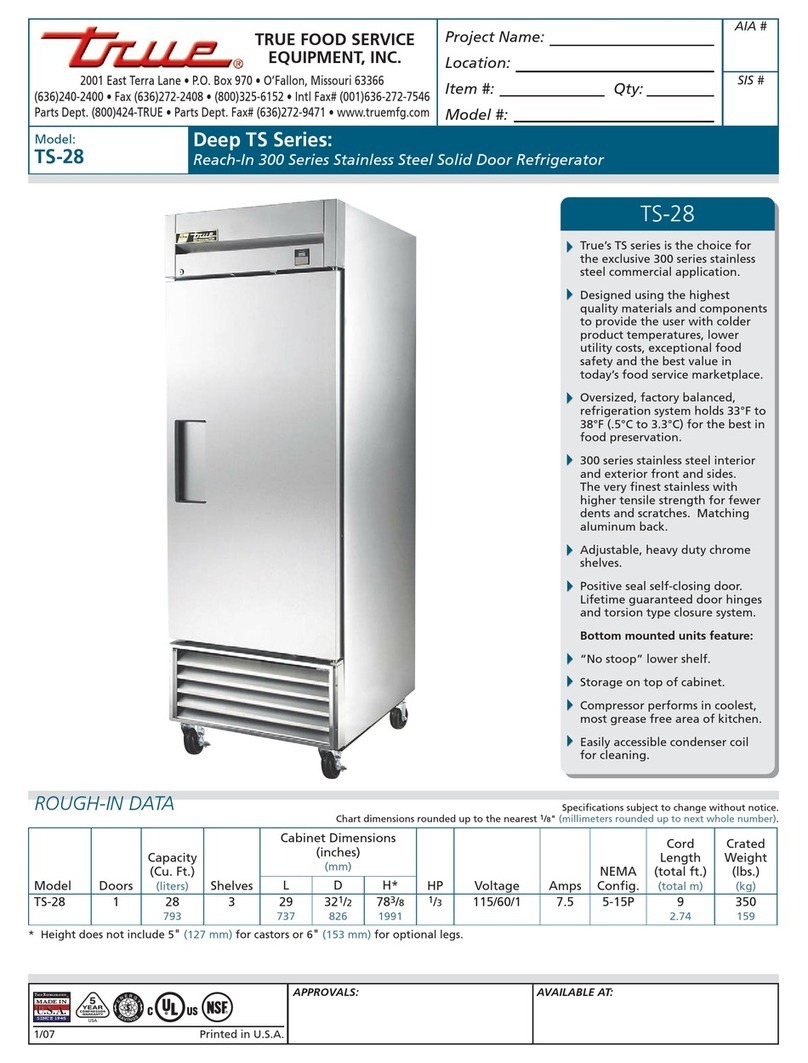
09
INSTALLATION
Notes for Movement and
Transport
•Remove all food from inside the appliance. Then,
transport the appliance only after fixing fragile parts
such as shelves and the door handle with tape.
Failure to do so may cause appliance damage.
•
power plug hook at the rear or on top of the
appliance. Failure to do so may cause damage to
the power plug or floor scratch.
•When transporting the appliance, more than two
people should transport the appliance carefully.
Dropping the appliance, which is extremely heavy,
may cause personal injury or appliance failure.
•When transporting the appliance over a long
distance, keep the appliance upright.
The appliance may fall over, causing malfunctions.
Never transport the appliance laying down as it
can cause a refrigerant circulation malfunction
when it is turned back on again.
Notes for Installation
•
–
it can cause vibration and noise causing the
appliance to fall resulting in injury. It could also
cause the doors not to close correctly and introduce
moisture inside the unit during operation.
–If the appliance front or rear is not level, adjust the
front feet so that it can be corrected. Severe cases
may need the floor to be packed out with strips of
thin timber.
•Avoid placing the unit near heat sources, direct
sunlight or moisture.
•Connect the power supply cord (or plug) to the outlet.
Don't double up with other appliances on the same
outlet.
•After connecting the power supply cord (or plug) to
the outlet, Wait 2-3 hours before you put food into the
appliance. If you add food before the appliance has
cooled completely, your food may spoil.
•Models with handles should be located at least 55 mm
from the wall on the hinge side to open door by 90°.
•Allow over 55 mm clearance to the right, left, back and
top when installing.
•To provide necessary air circulation, you should leave
enough space on each side, top and behind the
refrigerator-freezer.
•Set the limit stops in the upper corners of the back
plate of the device as shown in Fig.1 Stops (2) can be
found in the drawer inside appliance compartment.
–Fig.1 : Push Stopper (2) into part (1) until the end.
Push the refrigerator to the wall.
Pull the power plug out, insert and fix it into the
Leg Adjustment
To avoid vibration, the unit must be leveled.
If required, adjust the leveling screws to compensate
for the uneven floor.
The front should be slightly higher than the rear to
aid in door closing.
Leveling screws can be turned easily by tipping the
cabinet slightly.
Turn the leveling screws counterclockwise ( ) to
raise the unit, clockwise ( ) to lower it.
Install the appliance on a solid and flat area.
If the appliance is installed on an uneven floor,
EN
2
1
CLIMATE CLASS
The climate class is indicated on the
refrigerator's specification label located inside
the refrigerator compartment. Do not use the
refrigerator at a temperature exceeding the
established limits. The climate class is
defined by the refrigerator’s conditions of
use.
SN
N
T
ST
Class
From +10 to +32
From +16 to +43
From +16 to +38
From +16 to +32
Designation Outside temperature
range, in °C
Extended
temperate
Temperate
Subtropical
Tropical

